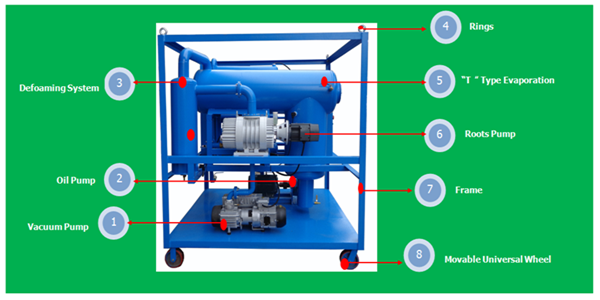Why Dielectric Transformer Oil Matters: Key Functions and Maintenance Tips
The relevance of dielectric transformer oil expands past simple functionality, playing a crucial role in both the insulation and air conditioning of electric transformers. The maintenance of these oils is equally essential to stop issues that may compromise transformer performance.
Importance of Dielectric Transformer Oil
Dielectric transformer oil plays a vital function in the effective procedure of electric transformers, as it is continually employed as both an insulator and a coolant. Its insulating buildings avoid electrical discharges and arcing, which are critical to maintaining the integrity of transformer elements. By properly separating conductive components, dielectric oil boosts the safety and reliability of the transformer, therefore prolonging its functional life-span.
Along with its insulating capabilities, dielectric transformer oil serves as a coolant, dissipating and absorbing heat created throughout the electrical makeover procedure. This thermal administration is vital to prevent overheating, which can bring about devices failure and costly downtime. The oil flows within the transformer, successfully moving warmth far from essential areas, hence making sure ideal efficiency.
Moreover, the chemical security of dielectric oil is important for lessening the oxidation and degradation that can occur gradually (waste transformer oil). Normal tracking of its homes, such as wetness material and level of acidity, is crucial for keeping its efficiency. In general, the value of dielectric transformer oil can not be overemphasized, as it is essential to the safe, efficient, and long-lasting procedure of electric transformers
Secret Qualities of Dielectric Oil
The performance of dielectric transformer oil is largely figured out by its crucial characteristics, which consist of high dielectric stamina, thermal conductivity, and chemical security. High dielectric toughness is important as it permits the oil to stand up to substantial voltage degrees without breaking down, therefore preventing electric arcing and ensuring risk-free procedure of the transformer. This characteristic is important for maintaining the integrity of electrical systems.
Thermal conductivity is an additional essential attribute of dielectric oil. It facilitates reliable heat dissipation from transformer parts, lessening the risk of getting too hot and lengthening the lifespan of the tools (waste transformer oil). Effective thermal monitoring is important in maintaining optimum operating temperatures, which straight affects efficiency
Chemical stability is similarly essential, as it makes certain that the oil does not deteriorate or respond adversely with materials within the transformer over time. This security assists maintain the oil's insulating buildings and prevents the formation of hazardous sludge or down payments that can impair capability.
Additionally, low thickness at operating temperature levels permits much better circulation within the transformer, cooling both boosting and insulation. With each other, these key qualities make certain that dielectric transformer oil carries out successfully, supporting the total effectiveness and integrity of electric systems.
Advantages of Making Use Of Dielectric Oil

Furthermore, dielectric oil functions as an efficient coolant, dissipating warmth created during transformer operation. This temperature level policy is necessary for stopping overheating, which can result in equipment failing or decreased life-span. The oil's thermal homes contribute to optimum functional conditions, making it possible for transformers to operate at their best.
An additional significant benefit is the oil's chemical stability and resistance to oxidation. These homes lower the development of sludge and other destruction by-products, consequently decreasing maintenance demands and prolonging the intervals in between oil changes. Dielectric oil supplies exceptional dampness absorption abilities, which shield the transformer from the damaging results of water access.
Upkeep Ideal Practices

In addition, preserving the transformer's temperature within defined limits is essential. Raised temperature levels can increase oil destruction, negatively affecting its dielectric homes. Implementing a temperature monitoring system can help in maintaining optimal problems.
Moreover, guaranteeing correct air flow and cooling of the transformer device minimizes the risk of overheating. It is additionally important to maintain the transformer free from particles and look here contaminants that may jeopardize useful link its performance.
Carrying out periodic aesthetic examinations for leakages, corrosion, or indications of wear on gaskets and seals is an additional ideal practice. Any type of irregularities ought to be resolved without delay to stop oil contamination and preserve system stability.
Finally, establishing an upkeep schedule that consists of oil substitute or therapy can boost the life-span of dielectric oil, ensuring it continues to perform properly. By embracing these maintenance finest methods, operators can optimize transformer efficiency and lessen unintended downtime.
Typical Issues and Solutions
Transformers making use of dielectric oil can run into several usual problems that may impact their efficiency and reliability. One noticeable issue is the destruction of the oil because of thermal tension, which can lead to decreased dielectric toughness and boosted risk of arcing. Routine surveillance of the oil's temperature level and executing cooling remedies can reduce this problem.
Another problem is moisture ingress, which can endanger the insulating buildings of the oil. This can be attended to via routine screening for water material and using desiccants or vacuum cleaner dehydration processes to remove wetness.
Furthermore, the development of sludge because of oxidation can obstruct typical operation. This can be fixed by regular oil purification and replacement when required, making sure optimum liquid sanitation.

Conclusion
In verdict, dielectric transformer oil plays a crucial role in ensuring the reliable procedure and safety of electric transformers. The importance of dielectric transformer oil can not be overemphasized in image source the realm of electrical framework dependability.
The significance of dielectric transformer oil extends beyond mere functionality, playing a pivotal function in both the insulation and air conditioning of electrical transformers.Dielectric transformer oil plays a vital duty in the reliable procedure of electric transformers, as it is regularly used as both an insulator and a coolant. In general, the significance of dielectric transformer oil can not be overemphasized, as it is essential to the secure, reliable, and long-term operation of electric transformers.
The performance of dielectric transformer oil is largely figured out by its crucial features, which consist of high dielectric toughness, thermal conductivity, and chemical security.In conclusion, dielectric transformer oil plays an important duty in making certain the efficient operation and safety and security of electrical transformers.